Smart living : cafetería virtual para la Institución Universitaria Antonio José Camacho.
Smart living : cafetería virtual para la Institución Universitaria Antonio José Camacho.
Main Article Content
The Smart Campus ecosystem macroproject, carried out at UNIAJC, seeks to impact the community in general through the optimization of institutional services. These improvements are framed within projects that, in cases like the one in this article, are supported by undergraduate projects and in others directly by the team of fellows of the Directorate of Information and Communication Technologies of the university. All the solutions generated from Smart Campus are oriented in 6 axes: Smart People, Smart Goverment, Smart Enviroment, Smart Mobility, Smart Economy and Smart Living. Each of these axes has strategic objectives aligned with the institutional development plan, making them highly relevant to the institution's development. This document reflects the most relevant results of Bermúdez & Ortiz (2020), who, aligned with the axis of Smart Living, generate a solution called virtual cafeteria, which allows purchases, reservation of lunches, display of all the products offered and the rating of the service offered by the cafeteria, being its greatest advantage being cross-platform.
Downloads
Article Details
Bermúdez, N., & Ortiz, N. (2020). Sistema Cafetería Virtual UNIAJC (tesis de pregrado). Institución Universitaria Antonio José Camacho, Cali, Colombia.
Folmer, E., Gurp, J. Van, & Bosch, J. (2005). Software Architecture Analysis of Usability. Architecture, 38–58. Retrieved from http://www.springerlink.com/index/87jl9wkck2gwyyd4.pdf DOI: https://doi.org/10.1007/11431879_3
IEEE Computer Society. (2014). IEEE Standard for Software Quality Assurance Processes. IEEE Std 730- 2014 (Revision of IEEE Std 730-2002). https://doi.org/10.1109/IEEESTD.2014.6835311 DOI: https://doi.org/10.1109/IEEESTD.2014.6835311
Kruchten, P. (2006). Planos Arquitectónicos: El Modelo de “4 + 1” Vistas de la Arquitectura del Software. IEEE Software, 12(6), 1–16.
Moya, (2012), Ilustración Modelo 4 vistas +1. Fuente https://jarroba.com/modelo-41-vistas-de-kruchten-para-dummies/
Nielsen, J. (2010). What Is Usability? In User Experience Re-Mastered. https://doi.org/10.1016/b978-0-12-375114-0.00004-9 DOI: https://doi.org/10.1016/B978-0-12-375114-0.00004-9
Pastrana, M., Ordóñez, H., Ordonez, A., Thom, L. H., & Merchan, L. (2018). Optimization of the Inception Deck Technique for Eliciting Requirements in SCRUM Through Business Process Models. Business Process Management Workshops, 4928(January), 649–655. https://doi.org/10.1007/978-3-319-74030-0_52 DOI: https://doi.org/10.1007/978-3-319-74030-0_52
Patidar, A., & Suman, U. (2015). A survey on software architecture evaluation methods. 2015 International Conference on Computing for Sustainable Global Development, INDIACom 2015.
Petre, M. (2013). UML in practice. Proceedings - International Conference on Software Engineering. https://doi.org/10.1109/ICSE.2013.6606618 DOI: https://doi.org/10.1109/ICSE.2013.6606618
PMI. (2017). PMI Fundamentos para la Dirección de Proyectos (guía PMBOK - 6ta edición).. https://doi.org/10.1002/pmj.20125 DOI: https://doi.org/10.1002/pmj.20125
Pressman, R. S., & Maxim, B. R. (2015). Software Engineering : A Practitioner’s Approach, Eighth Edition. In ACM SIGSOFT Software Engineering Notes. https://doi.org/10.1145/1226816.1226822 DOI: https://doi.org/10.1145/1226816.1226822
Sommerville, I. (2011). Ingeniería del software. Pearson 7a edición










